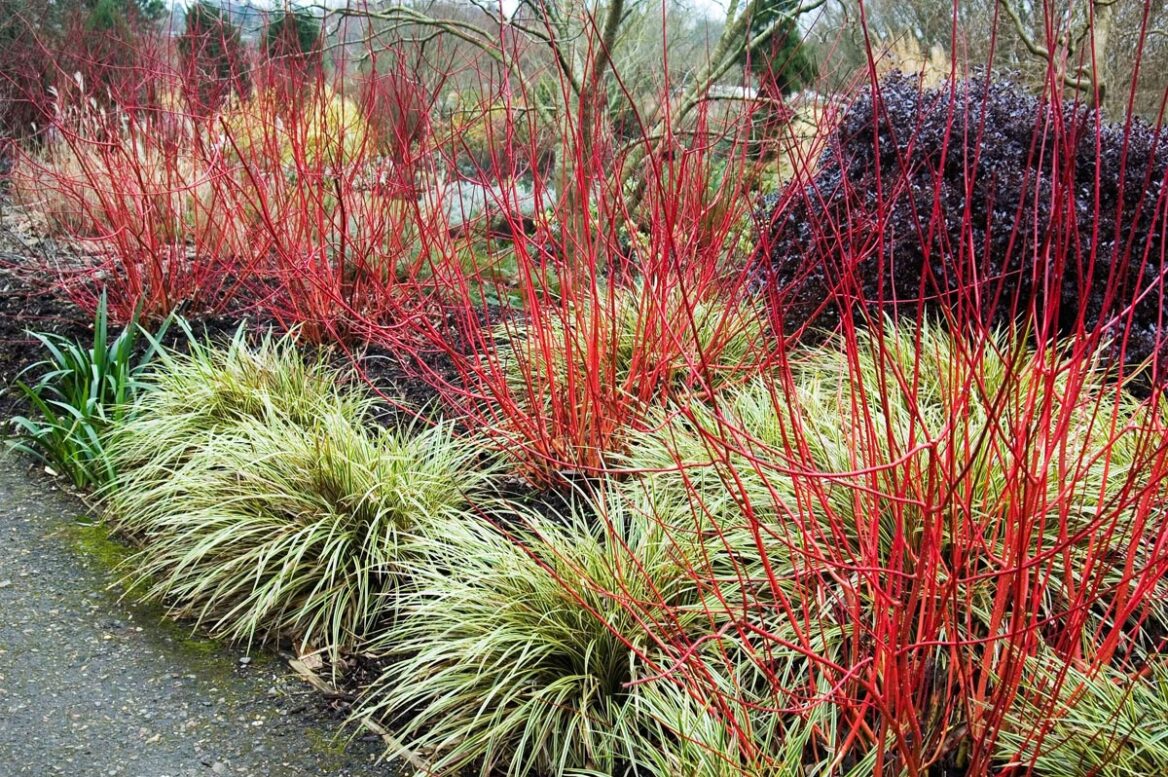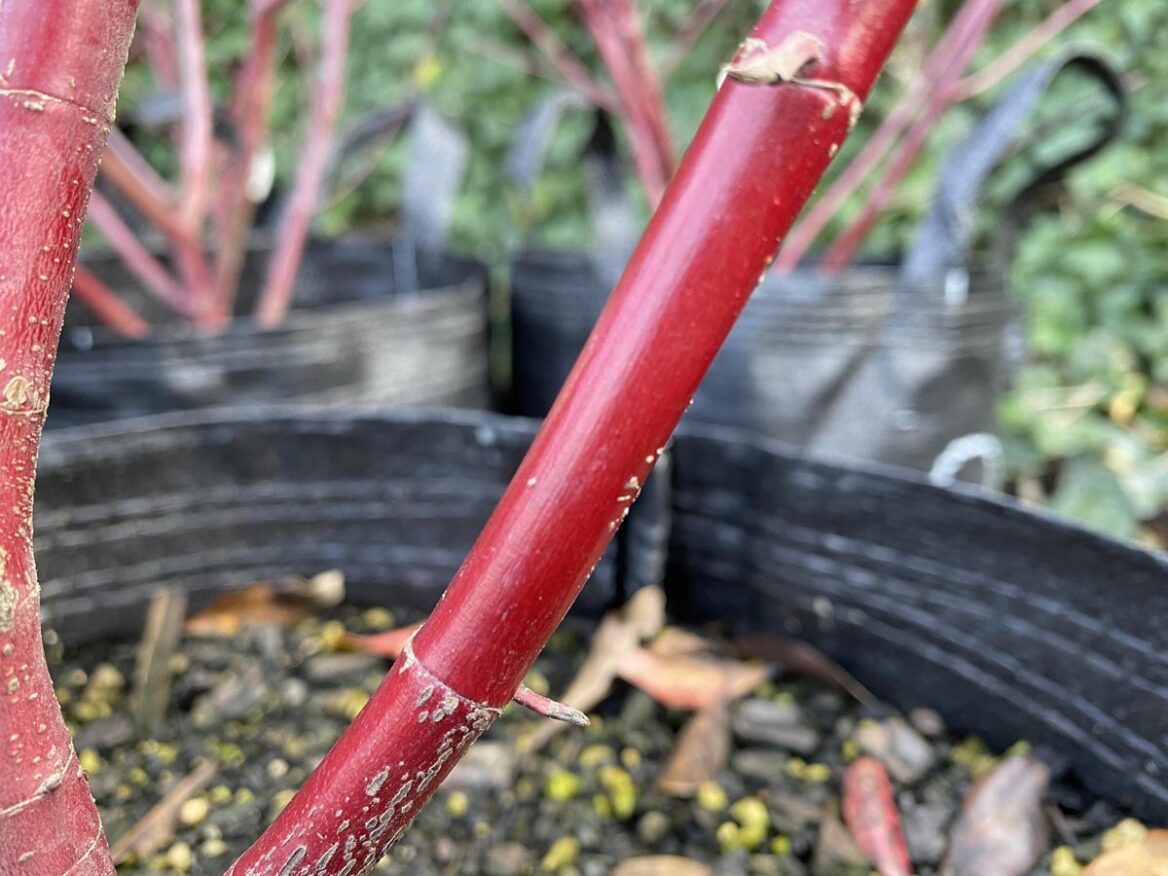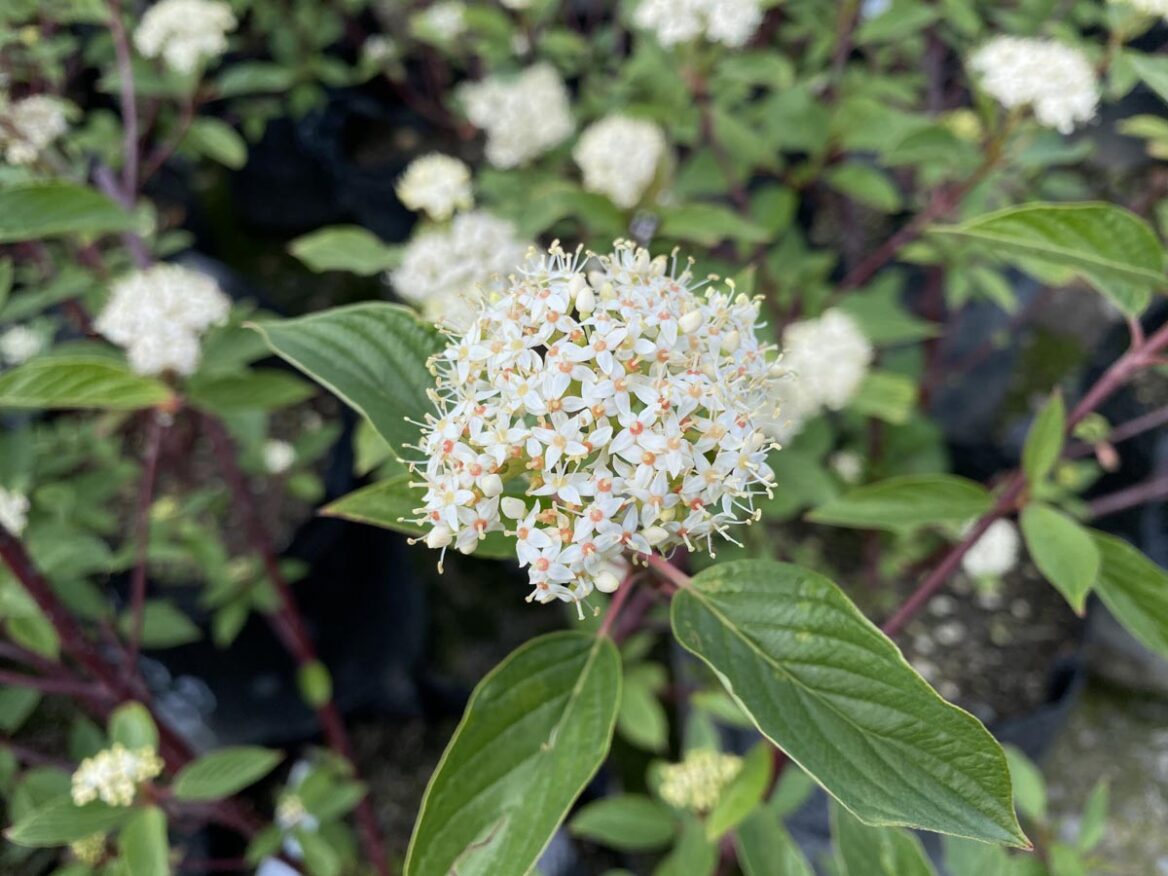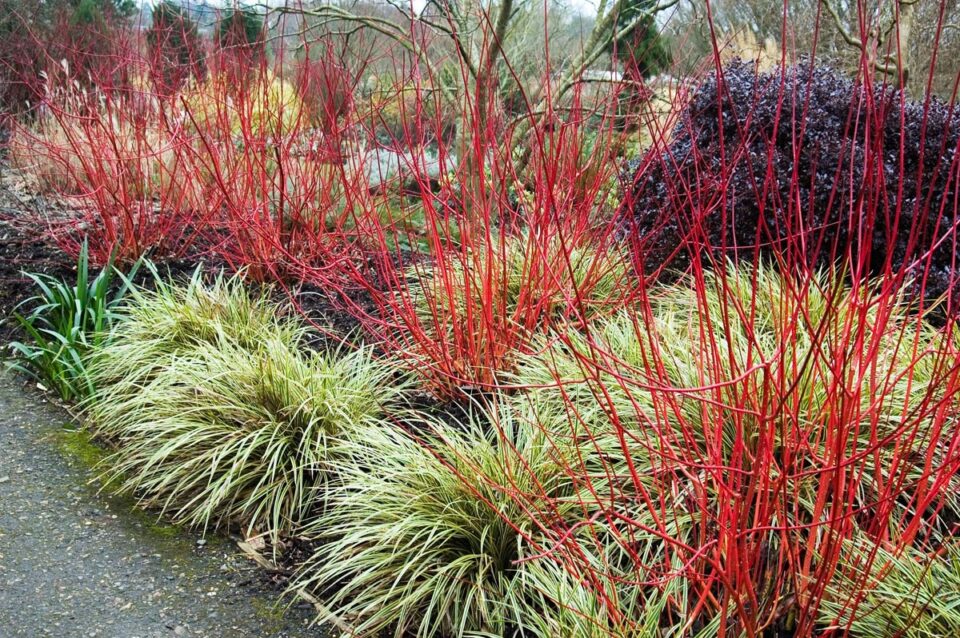Cornus alba ‘Sibirica’
Siberian Dogwood
Cornus alba ‘Sibirica’ is known for forming a thicket of erect, red stems, which are particularly striking in the winter months when the bare stems take on a glowing-scarlet color. It is capable of tolerating very wet growing conditions, making it a great option for use in a range of garden settings. Cornus alba ‘Sibirica’ features green leaves and cream bunches of spring flowers, followed by blue-white fruit. To promote new growth, it is recommended to cut back old stems to the ground every few years. In the autumn, the leaves of Cornus alba ‘Sibirica’ turn orange and red, adding a touch of color to the garden. Its unique growth habit, attractive foliage, and adaptability make it a practical and visually appealing choice for any garden. Cornus alba is deciduous and native to Siberia, northern China, and Korea. Learn more about Cornus alba. Cornus alba ‘Sibirica’ was introduced into commerce in the United Kingdom by the Loddiges family.
Other common name(s): Tatarian Dogwood
Synonyms: Cornus sericea subsp. sericea 'Sibirica', Cornus alba var. sibirica, Cornus sibirica
$63.70 – $156.00
Deciduous
Height: 3.0m
Width:
2.0m
Estimated 10 year height and width
Cornus alba ‘Sibirica’ stock information
Full Stocklist| Grade | Height | Standard | Available | I/P | Qty / Price |
|---|---|---|---|---|---|
| 35L | 1.3m | 104 | 0 |
$156.00Add to cart |





